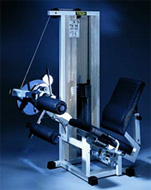
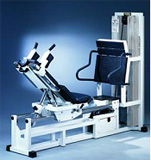

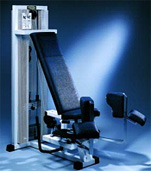
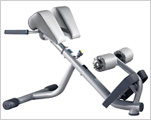
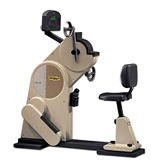
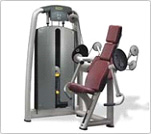

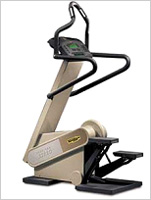
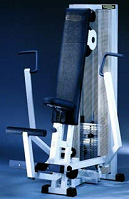
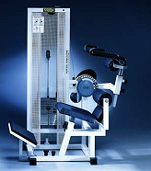
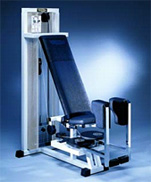
| HOME | MENU | DOCS | SEARCH |
Translations of articles in the English language
is in automatic mode, the original version
of the article in Russian - here
The basic means of therapeutic physical training (exercise therapy) are physical exercises (see the scheme of Classification of physical exercises) that are divided into the following: gymnastics, observasi and breathing, active and passive, without shells, and shells; sport-oriented: walking, running, throwing balls (inflatable, basketball, volleyball, etc.), jumping, swimming, rowing, skiing, skating, etc.; games: sedentary, active and athletic.
The scheme of Classification of physical exercises
Gymnastic exercises are performed under certain assumptions, with a certain amplitude, speed, repeatability. They develop strength, endurance, coordination, improve joint mobility, etc. Gymnastics can be divided by anatomic (biomechanical) sign (action) - exercises for the muscles of the neck, arms, legs, torso, abdominal wall, pelvic floor, etc.; methodological (pedagogical) focus on coordination, endurance, stretching, balance, strength, etc.; on the nature of the activity their performance, passive, active, passive-active, ideomotor.
Static exercises are held in the form of muscle tension, hold dumbbells, medicine balls, kettlebells, hold its own weight at the gym, while great, lugs on the shells (or on the floor, gym wall, etc.). Static exercises are used before and postmobilization period for the prevention of muscle atrophy, strengthening muscles and developing strength and endurance.
Stretching exercises are used in a variety of flexion in the joints with subsequent fixation of the joint in flexed position (2-10). Used to relieve fatigue, contractures, increased muscle tone.
Relaxation exercises (relaxing). They are used to relieve fatigue (during practice), decrease muscle tone (paresis, paralysis, traumas, contractures, etc.).
Ideomotor exercises - it's mentally to perform exercises, during which is given as an order to perform certain movements (paralysis and paresis, with plaster casts on limbs, etc.). They need to be combined with passive movements.
Passive exercises (movements) are performed by a physical therapist (instructor) physical therapy. Passive movements are characterized by a lack of willpower or muscle tension in the patient. Passive movements are applied to stimulate recovery of movement and prevention of contractures (paralysis, paresis, etc.).
Breathing exercises excite and deepen the breathing function, they contribute to the normalization and improvement act of breathing; at the same time is vzaimosoedineniya breathing and movements, strengthening respiratory muscles, improve mobility of the chest, stretching the (elimination) of adhesions in the pleural cavity, the prevention and liquidation of the stagnant phenomena in lungs, remove phlegm. Breathing exercises are divided into static (exercise, combined with movements of the limbs and trunk) and dynamic (when breathing is combined with different movements). In some diseases (asthma, emphysema, etc.) breathing exercises are performed with emphasis on the exhalation, the pronunciation of different sounds (especially in children), inflating toy, etc. bends, turns when performing breathing exercises contribute to greater ventilation of the lungs, the stretching of the pleural adhesions, resorption of inflammation (pneumonia, etc.).
The effectiveness of breathing exercises above, if they combine with exersices, massage the neck region (muscles of the shoulder girdle) of intercostal and abdominal muscles.
Corrective exercises aimed at correcting (correction), normalization of posture. Correct posture provides the most complete in terms of functionality relative positions and functioning of the internal organs and systems.
K corrective exercises include gymnastic exercises for the back muscles, abdominals and shoulder girdle performed in different initial positions, usually lying down (on back, belly), sitting and standing (gymnastic wall, against the wall, shoulder blades touching the wall). The exercises can be with gymnastic stick, rubber shock absorbers (bandages), free weights, fitness machines, in the form of breaststroke swimming, etc. the deformations of the spine (scoliosis, spondylolisthesis, spondylosis, etc.) include corrective exercises in combination with exersices and massage.
Exercises on gymnastic apparatus and exercise machines, with objects. Exercises on gymnastic apparatus are great, stops, pull-UPS, Items and projectiles can be of a stick, dumbbells, printed balls, clubs, hoops, etc.
Simulators to restore sporting (physical) health
for injuries and diseases of the musculoskeletal system
 |
 |
 |
|---|---|---|
 |
 |
 |
 |
 |
 |
 |
 |
 |
In recent years, become widely implemented in medical practice (rehabilitation system) simulators, which allow to specifically affect a particular segment, organ, functional system, etc. of Particular value is that including certain exercises, they can be dosed in strength, tempo, range of motion; at the same time is unloading the spine, and this is extremely important in diseases such as spondylosis, osteochondrosis, scoliosis, coxarthrosis, functional disorders of posture, injuries and diseases of the musculoskeletal system, especially in the post-operative period.
Sports and applied exercises is a natural physical action or their elements. These exercises are climbing, household and labor actions, jumping, throwing, swimming, skiing, rowing, walking, grasping, displacement and relocation of various items, etc.
Some exercises are more effective for the development of endurance, normalization of the functional state of the patient, (especially in diseases of the cardiorespiratory system, metabolic disorders, etc.).
Exercises to restore everyday skills used in violation of movements (injuries, amputation, paralysis, etc.) that are required for domestic and industrial motor acts (dressing and undressing, washing, brushing teeth, combing, as well as opening and closing of the lock, water tap, telephone, etc.).
For these purposes, use special stands (in the offices of occupational therapists).
The walk as a therapeutic agent widely used for recovery of motor function, training of the cardiovascular and respiratory systems, etc. is also Used of walking with crutches, the special "walking frames", walking the stairs, in water, etc. the Dosage is the tempo, the length of the steps, time, terrain (smooth, rough, etc.). The walk is used to restore the mechanism of gait (when injuries, amputations, paralysis, etc.), improve joint mobility, and cardiovascular system in patients with coronary heart disease, hypertension, vascular dystonia, pulmonary pathology (pneumonia, bronchial asthma, etc.), in violation of metabolism. Practiced dosed walking, walking in the countryside with various terrain (terrenkur).
Running is a common exercise impact on cardiorespiratory system and metabolism. In conjunction with the walk, it is widely used in sanatorium treatment. As the body's adaptation to training run through the length of the segments increases and the walking decreases.
Skiing contributes to the training of the cardiorespiratory system, stimulates metabolism in tissues, etc. depending on the type of walking (tempo, speed, length, distance, profile, distance, etc.), the intensity of the exercise can be moderate, large and maximum. Skiing has not only a coaching effect, but tempering. Ski trips are widely used in sanatoriums and rest homes.
Rowing has a beneficial effect on cardiorespiratory system, metabolism, muscular system, etc. In sanatorium-resort conditions boating is widely used in various diseases of the musculoskeletal system, cardiovascular system, respiratory, metabolic disorders.
Skating requires good coordination. Especially useful for ice skating in the neuroses, diseases of the cardiorespiratory system, etc. Dosage depends on riding time, number of laps, pace, etc.
Cycling enhances vegetative-vestibular reactions, stimulates metabolism, and is also an excellent tool for training the cardiovascular system, respiration, the functions of the lower limbs, etc. the Dosage is determined by your Cycling, by its tempo, distance (distance), relief, etc. Used in sanatorium treatment, rest.
Swimming as a means of physical therapy used in the cardiorespiratory diseases, metabolic disorders, injuries and diseases of the musculoskeletal system, etc. swimming is a good means of training the cardiovascular and respiratory systems, as well as thermoregulation. The dosage is determined by the length of the float segments, tempo, rest periods between segments, as well as swimming technique. If the patient do not swim, the energy it spends much more.
Games as a means of physical therapy aimed at improving motor skills in a changing environment, to improve the functions of the analyzers. Games have a coaching effect for a number of systems and organs, and if still to consider the emotional factor, they are successfully used and in the neuroses, vegetative-vascular dystonia and other pathology. The advantage of games is the fact that during these periods of tension alternate with relaxation. Games are especially useful for children. In games develop qualities such as agility, speed of reaction, attention and other skills. Therapeutic use sedentary, outdoor and sports games, water games, etc. Games, sedentary and mobile include group therapies in physical therapy. Games are widely used in children's medical institutions, sanatoriums, boarding schools and other institutions.
The duration and intensity of games is adjusted by changing the height of the net when you volley, the number of participants, game rules, include pauses for relaxation and breathing exercises; resize sites.
Do not include games in the group physical therapy sessions of patients with diseases of cardiovascular system, impaired function of the vestibular apparatus, with marked cerebral sclerosis, intermittent claudication (obliterating endarteriit) etc. outdoor games are included in physical therapy sessions in clinics, dispensaries and sanatorium treatment. Loads governed the selection of games, rest intervals, change "it".
It is available for the original version
of the article in Russian
<< Previous: Therapeutic physical culture
We recommend that you look at the popular sections of the site myvaleology.com: MENU with a description of the sections | |||
| SOCIAL | DONATION | MY DIET | MY SPORT |

|
Release all4e8 |
||
Copyright © VZOJ 2023. All rights reserved. When reprinting or quoting myvaleology.com materials please put a link to the site myvaleology.com :
<a href="https://myvaleology.com">Healthy lifestyle</a>